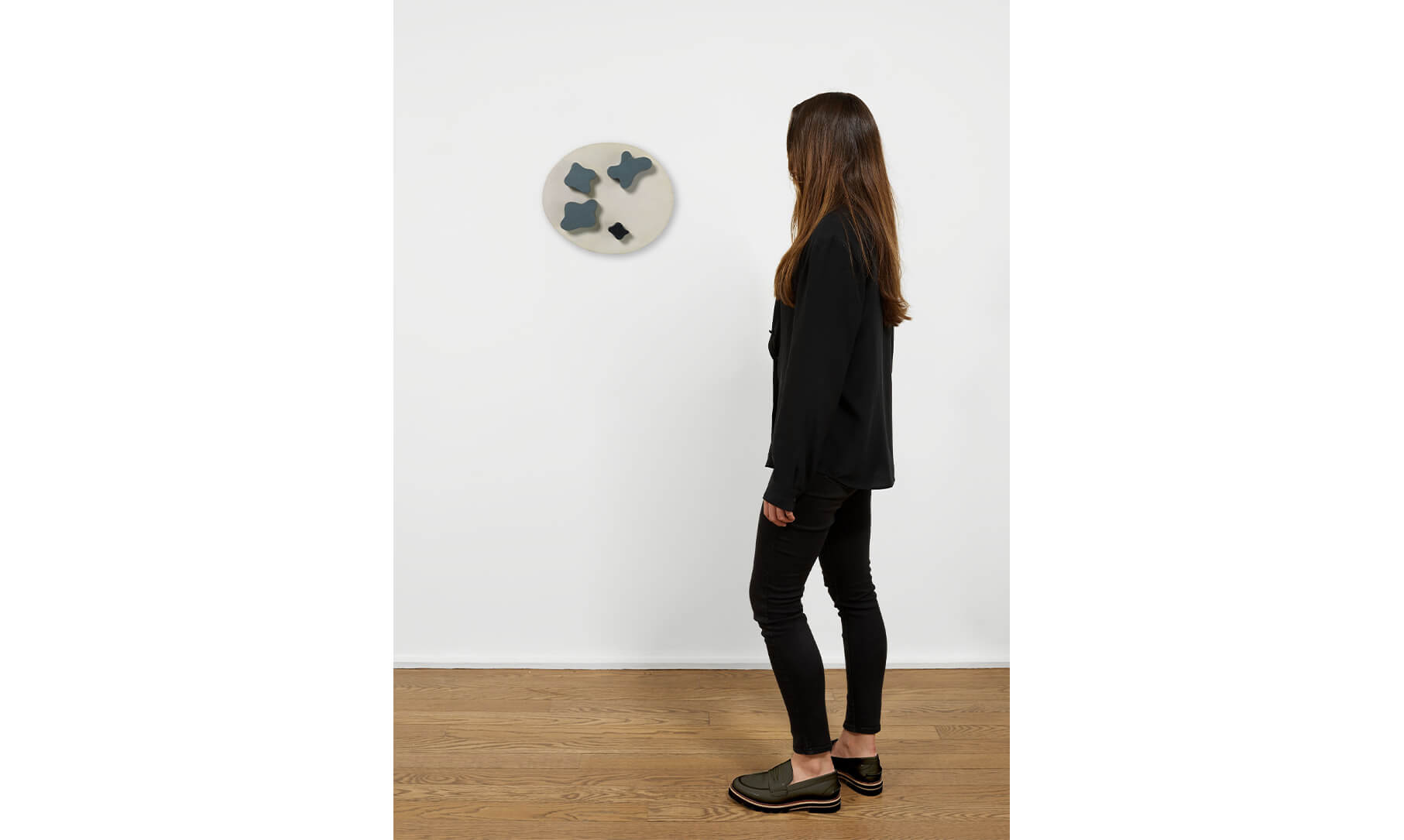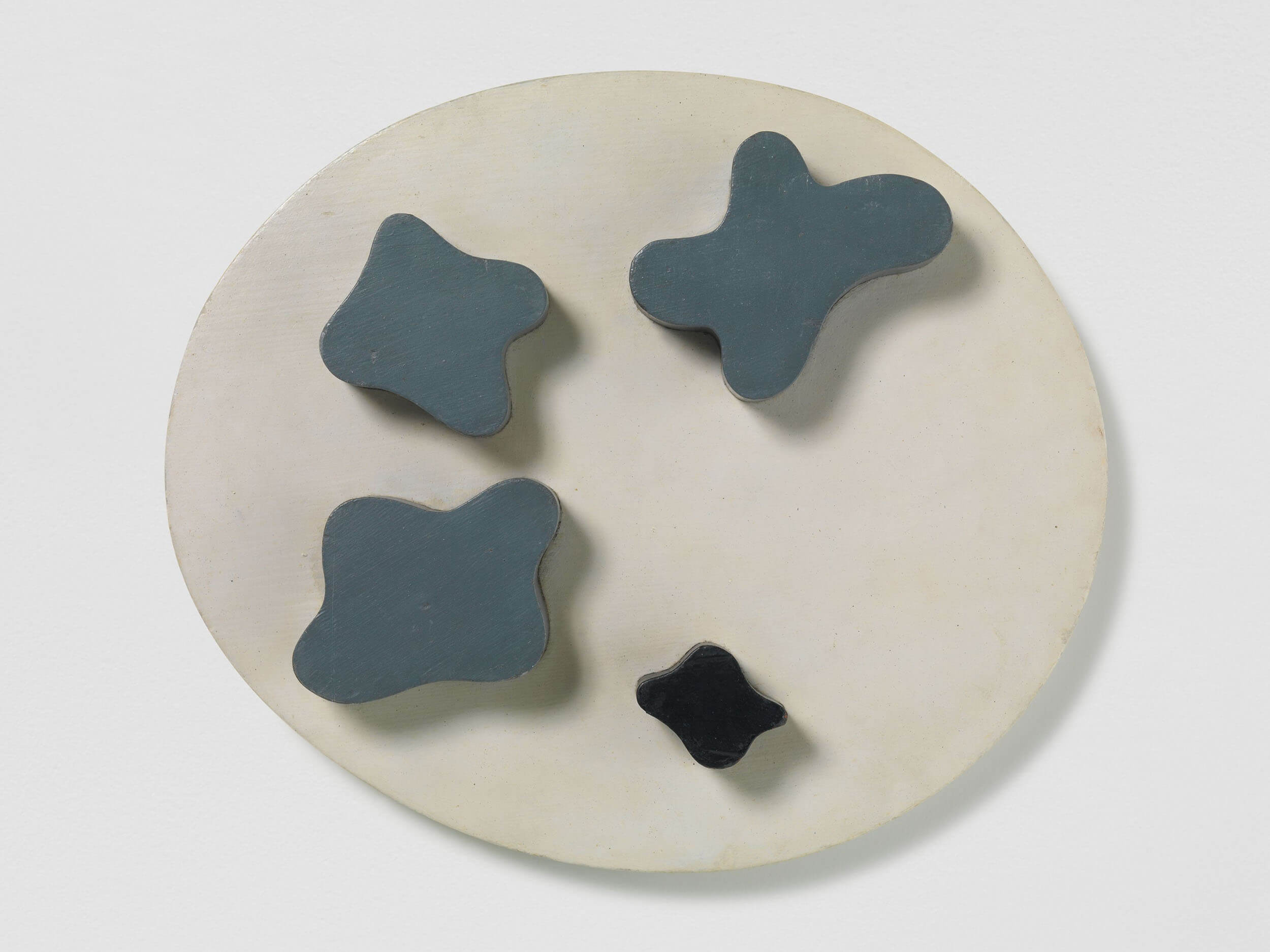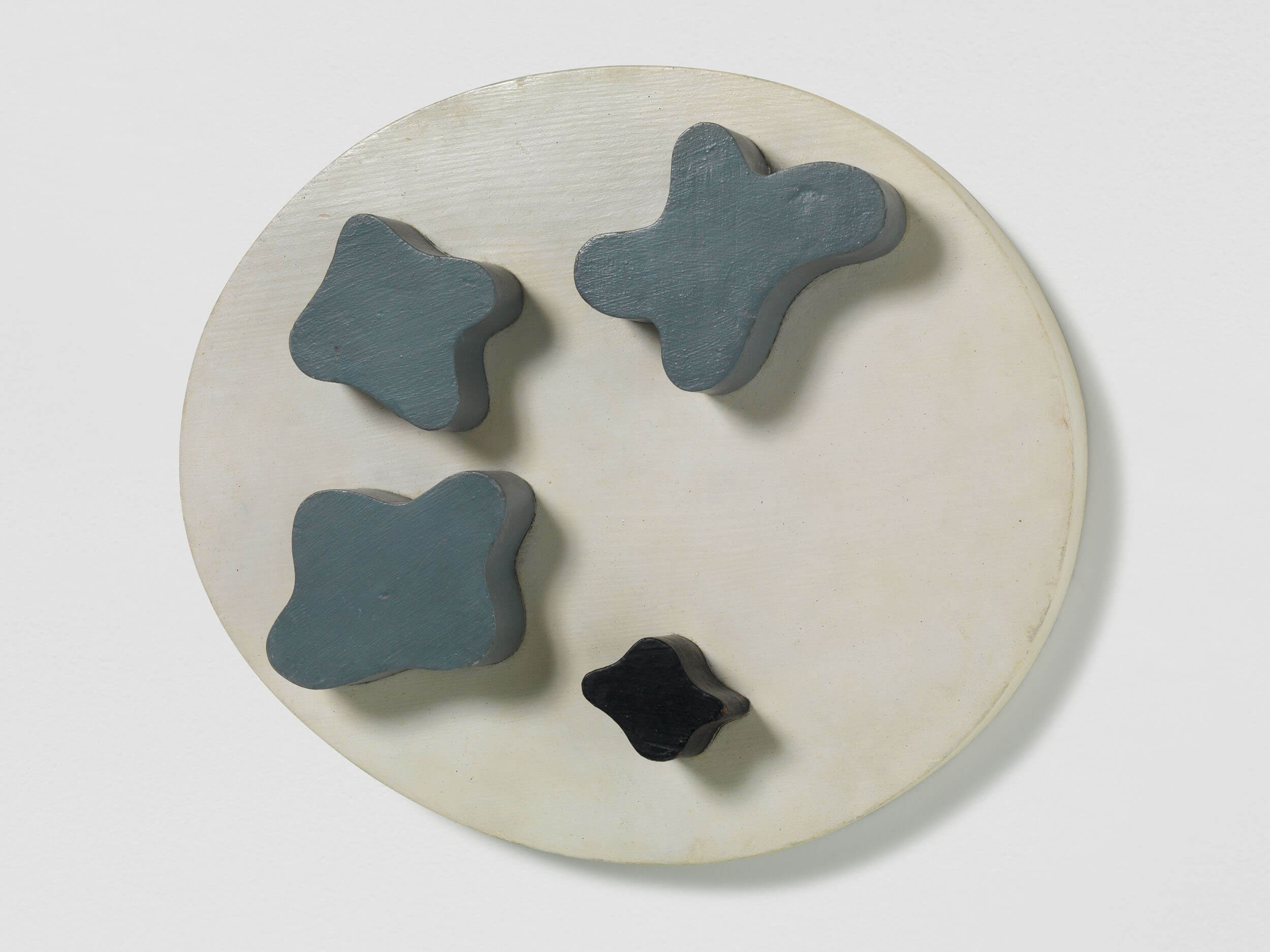
Hans Arp
Feuilles IV / Blätter IV (Leaves IV)
Feuilles IV / Blätter IV (Leaves IV)
1930 Wood 19 x 34 cm / 7 1/2 x 13 3/8 in Verso, signed, dated and titled
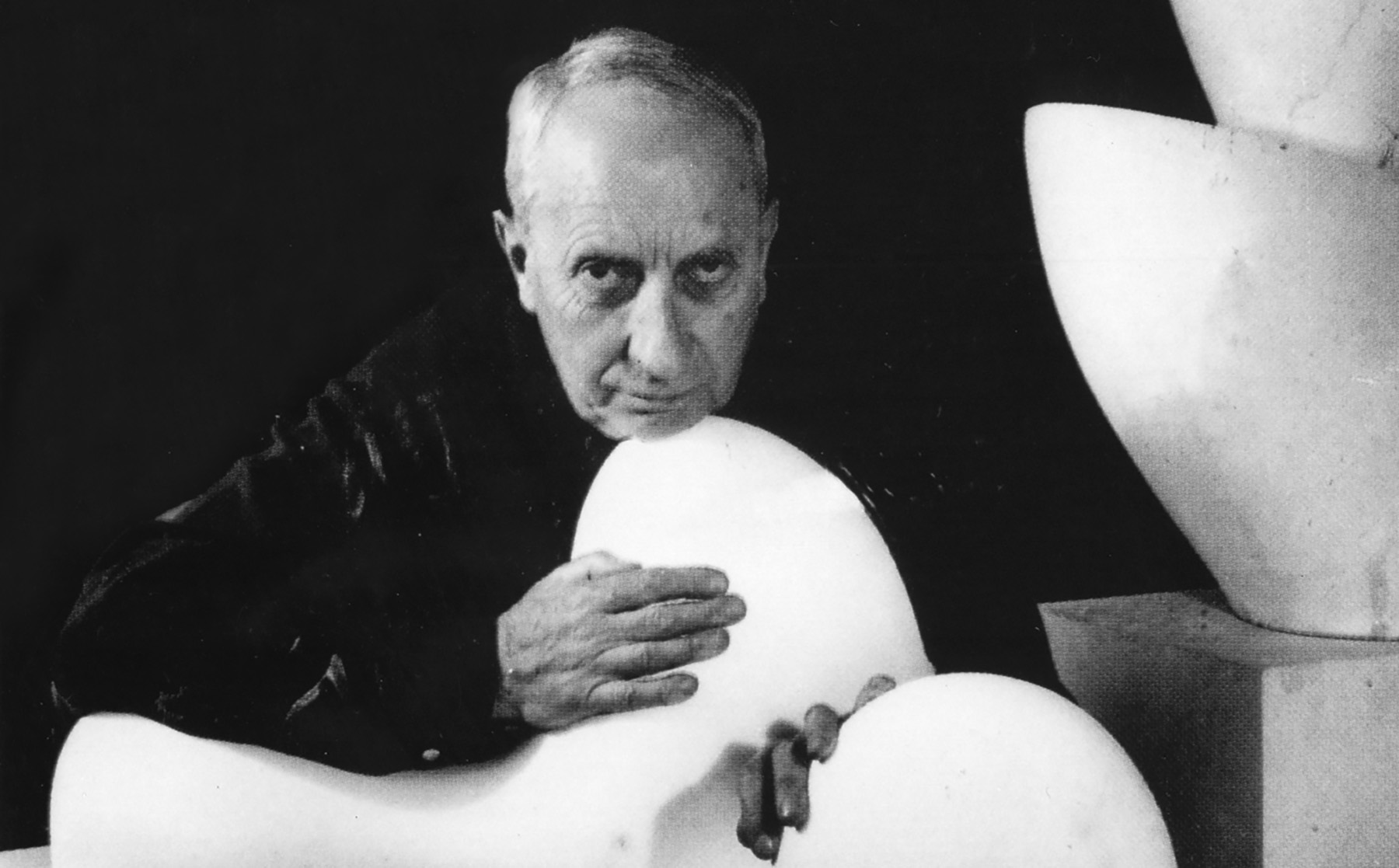
Hans Arp
Hans Arp is a familiar figure of classical Modernism and was a key contributor in the development of Dada and Surrealism in the early twentieth century. Focusing his attention on everyday objects, Arp created his own unique ‘object language’ using a nonsensical vocabulary: plate, fork, knife, clock, tie, moustache, lips, breasts. With a playful hand he juggled the dominant art currents of the early twentieth century, combining seemingly contradictory geometric and organic formal idioms with the artistic ‘-isms’ of his epoch.
Feuilles IV / Blätter IV (Leaves IV), 1930
Testament to Hans Arp’s elegant visual language, ‘Feuilles IV / Blätter IV (Leaves IV)’ (1930) evokes the quiet poetry of the organic world while representing a pivotal moment in the artist’s practice as he shifted from relief works, which he had begun in 1914, to sculpture in the round—both of which remained benchmarks of his practice for the duration of his career. Consisting of fluidly cut wooden amoeba-like forms set in relief, ‘Leaves IV’ demonstrates the artist’s fascination with the way in which biology invisibly yet perceptibly dictates our existence. [1] Conveyed through eucalyptus blue and black painted biomorphic elements hovering before a circular cloud-white background, the painted surface of ‘Leaves IV’ paradoxically belies its wooden construction. In this way, this relief epitomizes Arp’s unique aesthetic, synthesizing Abstraction and Surrealism. His expression, derived from years among the Zurich Dada artists, was founded on the laws of nature and chance, further enriched by the fluidity of automatist renderings and readings of form.
‘Leaves IV’ articulates a complete worldview: a universal vision made up of living particles infused with an innate natural or spiritual order and rhythm that pulse through the forms in a reflection of the creative energy and intuitive skill of the artist. This perspective manifests in early reliefs such as the multi-colored ‘Forêt (Forest)’ from 1917, his series of constellations, and works such as ‘Manicure-Relief’ (1930)—all drawing reference from counterparts in the physical world. Arp’s language of rounded, organic forms—at once figurative and chimeric—served as the wellspring of his art, evincing a continuous metamorphosis that echoes the generative process of nature itself. His elemental motifs were recast over and over in various media and in new configurations, underscored by the similarities between the asymmetrical quatrefoil forms in ‘Leaves IV’ and his first plaster sculptures from the same period—namely ‘Torse (Torso)’ sculptures from 1930 and 1931.
Arp’s actions and decisions attempt to draw on the innate logic and patterns of nature—on the laws of change. It was his intention, as he pointed out early in his career, not to work ‘from Nature’ as so many artists had before him, but instead to try to ‘to be natural’. ‘I made my first experiments with free forms’, he explained of what was to become his consistent aesthetic, ‘I looked for new constellations of form such as nature never stops producing. I tried to make forms grow. I put my trust in the example of seeds, stars, clouds, plants, animals, men, and finally my own innermost being.’ [2] With this in mind, ‘Leaves IV’ clearly evinces Arp’s fascination with universal and metaphysical connections, articulating his ever-expanding morphology.
[1] Although the number attached to the title ‘Leaves IV’ alludes to a series, there is no indication of prior or associated versions in the Hans Arp catalogue raisonné of reliefs. [2] James Thrall Soby, Jean Hans Arp, Richard Huelsenbeck (et al.), 'Arp', New York NY: The Museum of Modern Art, 1958, p. 26.
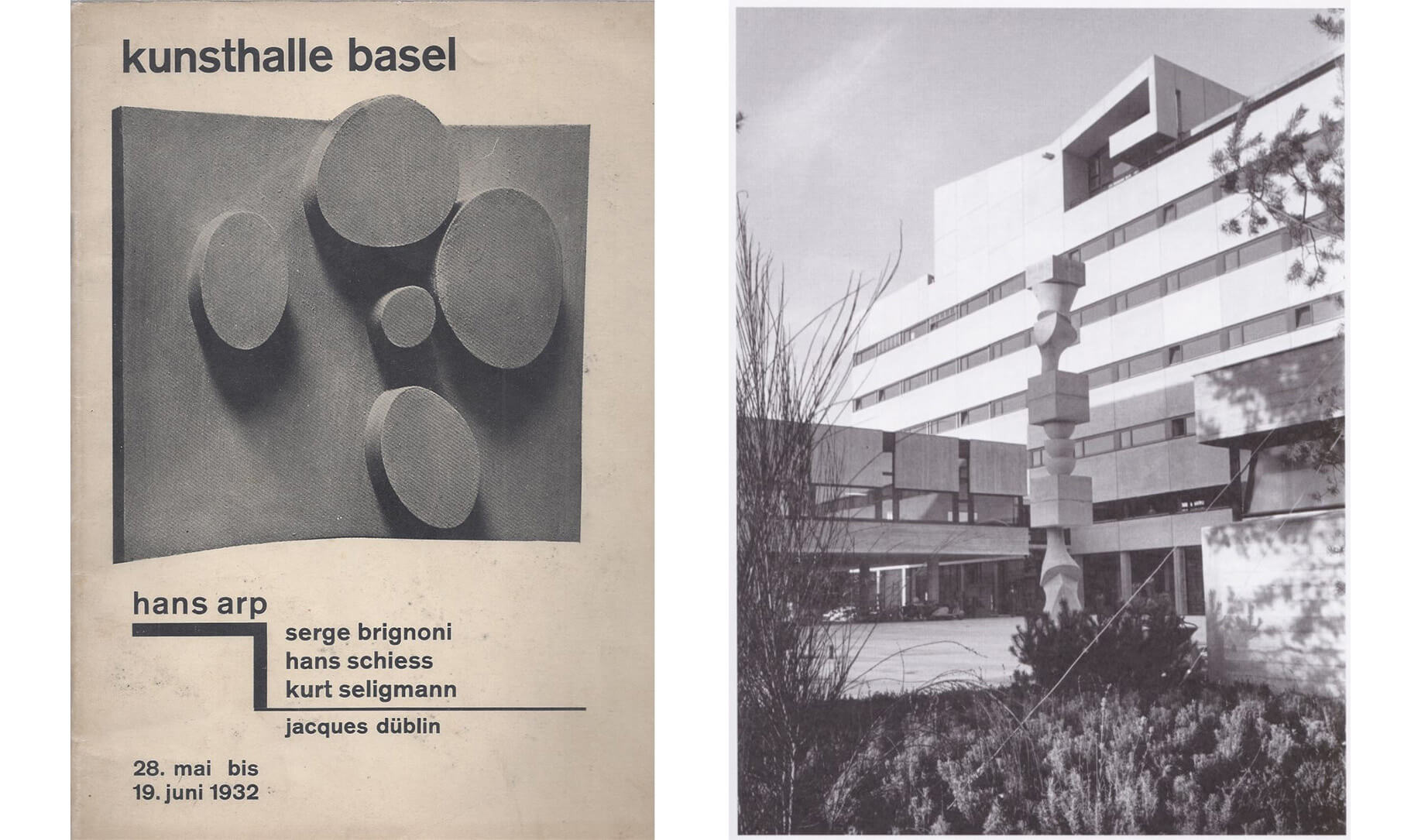
Celebrating Basel Basel
Basel played an important role in Hans Arp’s life and work. As early as 1932 and 1944, he was a part of the group exhibitions at Kunsthalle Basel, alongside Serge Brignoni and Kurt Seligmann. Later, his interest in architecture culminated in the 1960 public sculpture ‘Betonstele Colonne aux éléments interchangeables’ at Allgemeine Gewerbeschule Basel. Arp’s freestanding, edifice-like relief simultaneously created barriers and passages.
Master of 20th Century Sculpture
Over a period of more than sixty years, Arp produced an extraordinarily influential body of work that shifts fluidly between abstraction and representation, and between organic and geometric forms. Take a closer a look at the life and work of this 20th-century master, with insights from Nasher Sculpture Center curator Catherine Craft, Gerhard Marcks Haus director Arie Hartog, and Loretta Würtenberger, director of The Institute for Artists’ Estates.
